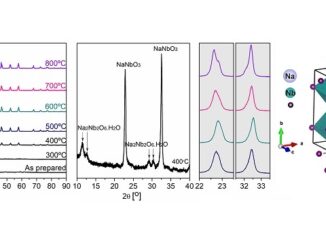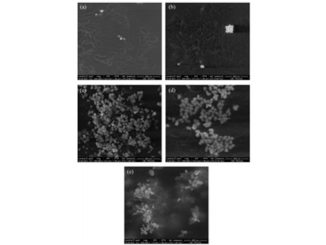
Tuning structural, optical, and gas sensing properties of ceria-based materials by rare-earth doping
Abstract: In this study, we investigate the influence of rare-earth dopants on the structural, optical, gas sensing properties of Ce1-(3/4)xRExO2 (RE = Eu, La; x = 0.0 and 0.08) nanoparticles synthesized using the microwave-assisted hydrothermal method. X-ray diffraction analysis confirmed the formation of CeO2 fluorite structure free of secondary phases. Raman spectroscopy indicates oxygen vacancies are the dominant defect in the samples. Additionally, doping with La and Eu decreased the bandgap energy of the pure sample. The different dopants changed the photoluminescence spectrum of pure ceria, leading to blue (La) and red (Eu) emissions with a higher number of electronic transitions for the Eu-doped nanoparticles, which consists of six bands between 550 and 750 nm. For the thick films fabricated using the as-prepared nanoparticles, a measurable response in terms of resistivity was observed during interactions with vacuum, dry air, and carbon monoxide atmospheres. The Eu-doped thick film reacted much faster (1 s) with carbon monoxide compared to La-doped (4.2 s) and pure ceria (6.6 s), corresponding to an improvement when compared with other studies reported in the literature. Doping the ceria structure proved to be beneficial to its carbon monoxide sensing properties and produced tunable photoluminescent emissions, which are promising for white LED applications.
Author(s): Ortega, P.P.; Hangai, B.; Moreno, H.; Rocha, L.S.R.; Ramírez, M.A.; Ponce, M.A.; Longo, E.; Simões, A.Z.
Journal of Alloys and Compounds
Published: 25 December 2021, Volume 888, 161517




